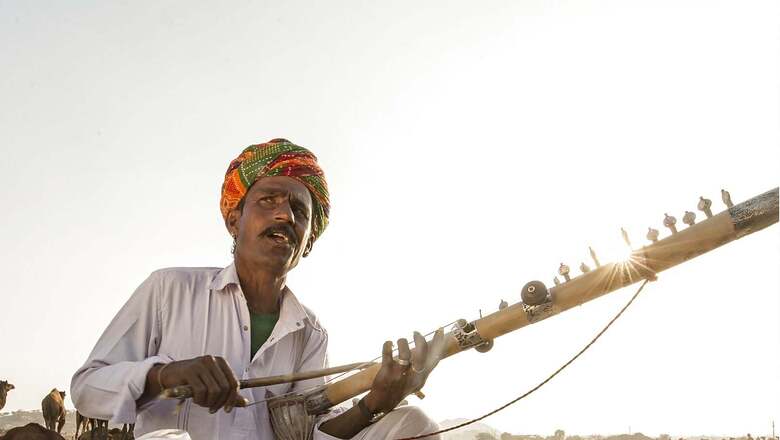
views
WORLD MUSIC DAY 2022: In an age dominated by electronic sounds and techno-based music, the charm of musical instruments is fast losing ground as they slip into oblivion.
Something as commonplace as the tabla or even the piano is more often than not, being replaced by computerised sounds and beats, leaving little scope for traditional artists to showcase their talents, many of whom are leaving for greener pastures, with the instrument and its ‘gharana’ itself dying out. The elemental sounds of music, it seems, is well on its path to oblivion. This especially holds true for Indian classical music, where in both Carnatic and Hindustani gharana, each instrument has helped shape musical style in the past, the loss could be irrevocable.
World Music Day which celebrates the various facets of tones and tunes and has evolved to explore new musical trends from around the world and revive traditional music is perhaps the perfect time to pause and look at a few beautiful musical instruments that are slowing fading away into pages of history.
Rudra Veena
Known as the ‘mother of all instruments’, it traces its lineage back to mythical times and is associated with Lord Shiva. Shiva is said to have created the Rudra veena, inspired by his wife, Parvati. An ancient instrument rarely played today, the rudra veena declined in popularity in part due to the introduction in the early 19th century of the surbahar, which allowed sitarists to easily present alap sections of slow dhrupad-style ragas. Dattatreya Rama Rao Parvatikar, also known as Veena Baba, a Hindu saint and sanyasi was one of the most well-known exponents of the famed rudra veena.
Mayuri
Shaped like a peacock and with actual peacock bill and feathers, the instrument has a strong connection with Punjab as the sixth Guru, Hargobind Sahib Ji. He is said to have invented this instrument. Even though it is associated with Saraswati, the goddess of music in India, it has slowly become rare.
Morchang
Widely popular in Rajasthan as well as Carnatic music in the 20th century, the Indian Jaw harp also known as morsing is a tiny wind percussion instrument played using the mouth and left hand, is hard to find nowadays. The rhythmic musical instrument consists of a metal tongue and metal ring on the middle and can create many patterns of sounds.
Yazh
Once a famous Tamil instrument, the Yazh is restricted to museums and collectors today. The harp instrument required both hands to play with strings and its name is derived from the mythical animal Yali.
Nagfani
Made of brass tube with a serpent styled head, it was commonly associated with sages and holy men. The literal translation of Nagfani is snake hood and the serpentine horn, once popular across Gujarata and Rajasthan, is rarely found nowadays.
Ravanahatha
A baroque instrument that traces its lineage back to the rule of the mythical king Ravana. Legend has it that Hanuman brought it to North India after Ravan was defeated in Lanka. While it was a popular instrument once upon a time, it has been restricted to folk music in Rajasthan nowadays.
Pena
Also known as Bana, Bena or Tingtelia, it is an instrument that is restricted to the Meitei community of Manipur in India. Pena playing is becoming a dying art as only 145 active Pena players are reported in Manipur.However, the Center for Research on Traditional and Indigenous Art (Laihui), an organization headed by renowned Pena player, Khangembam Mangi Singh has mandated vision to revive Pena music.
Read all the Latest News , Breaking News , watch Top Videos and Live TV here.




















Comments
0 comment